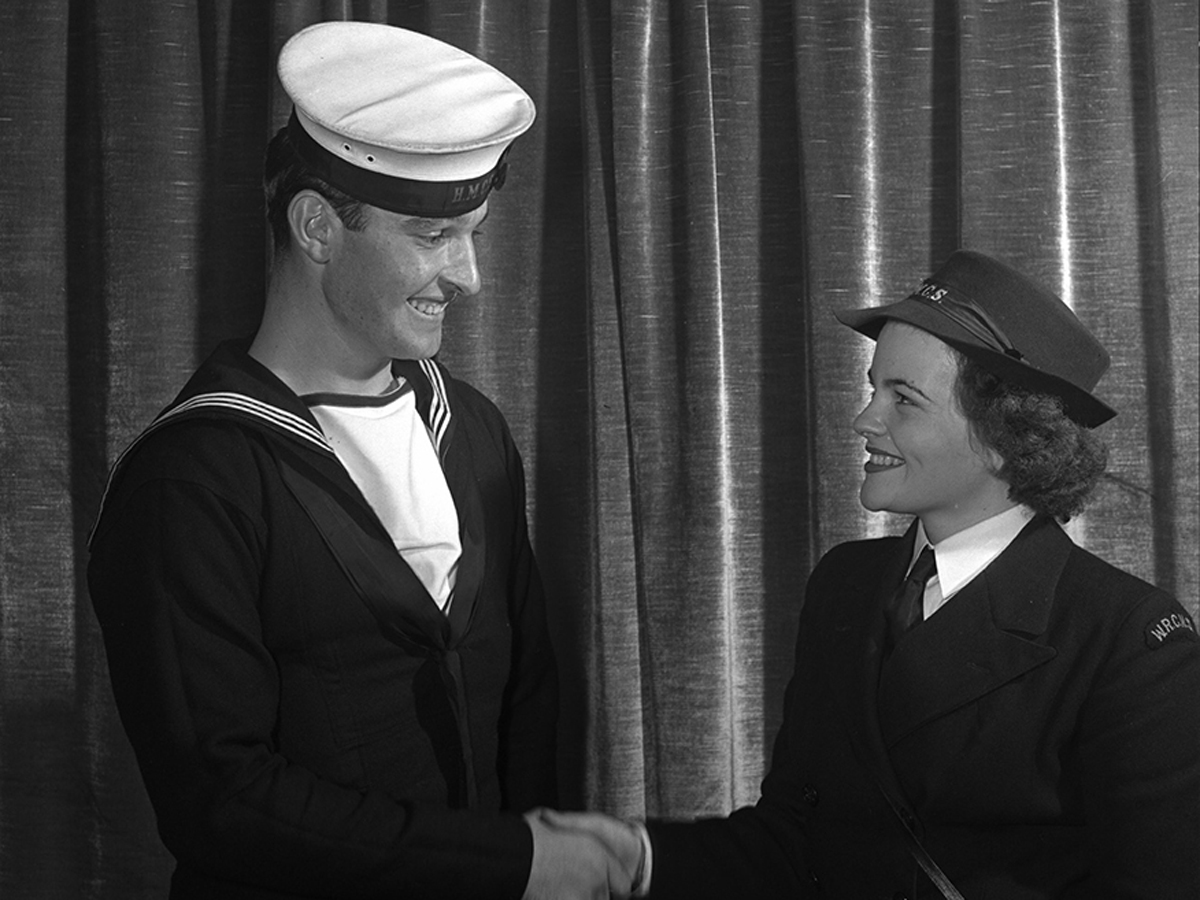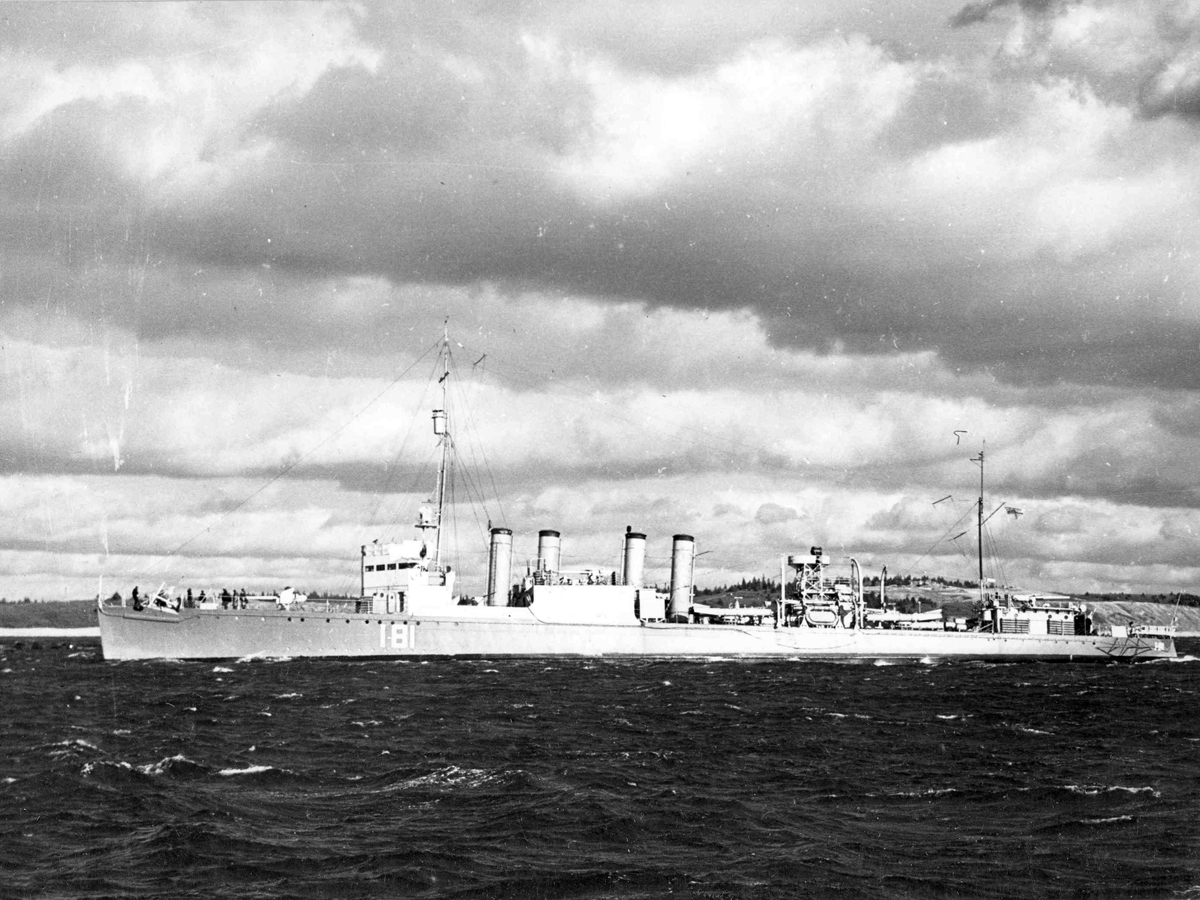Second World War stoker survives two U-boat attacks, sinkings in two days
By Lookout Production on Nov 10, 2022 with Comments 0

Stoker William Fisher with an unidentified member of the Women’s Royal Canadian Naval Service. Photo courtesy of Canada.ca.
CFB Esquimalt Naval and Military Museum
—
For Stoker William Allen Fisher of the Royal Canadian Navy Volunteer Reserve (RCNVR), becoming the sole survivor of not just one but two vessels sunk by enemy submarines in the Battle of the Atlantic was a lonely and harrowing experience.
On Sept. 20, 1943, Fisher’s ship, the Town Class destroyer HMCS St. Croix, was escorting convoy ON.202 south of Iceland when the German U boat U 305 hit and sunk it. Sixty-five members of the ship’s company died due to the submarine’s acoustic torpedo attack. Eventually, the Royal Navy ship HMS Itchen rescued five officers and 76 men from St. Croix, including William Fisher.
As fate would have it, a mere two days later, the Itchen was torpedoed by submarine U 666 south of Greenland. All officers and those from St. Croix aboard Itchen perished, with one remarkable exception: William Fisher.
Fisher would be considered extraordinarily fortunate to have lived through these terrible incidents by most people’s standards. He had been in the RCNVR for just a year and 11 months when the St. Croix was lost.
“It was hard to take, the boys had all been old hands and old friends,” he recollected in his eyewitness account of both sinkings, The End of HMCS St. Croix, which appeared in the Royal Canadian Navy (RCN) Month Review in August 1944.
In his account of the events, Fisher wrote of being adrift for 13 hours in a crowded whaler with four Carley floats tied to it, all loaded with men and bailing frantically as the whaler took on water. In his subsequent rescue from HMS Itchen, he had only a piece of debris to cling to in the freezing water after diving over the side following the torpedoing of the ship.
“The water was rough,” he said in the memoir. “I saw a lad holding onto a board, and swam over and took hold of the board with him. The water was very cold and I started to get cramps. I held onto the board for about one hour. Then the lad passed away and I started to run into quite a few bodies.”
In the act of kindness, Stoker Fisher wrote a personal letter to the mother of his crewmate, Ordinary Seaman William (‘Billy’) Deeks, about the loss of her son and his last moments of life. This original letter was donated to the CFB Esquimalt Naval and Military Museum collection, and a copy is featured in the museum’s permanent display commemorating the Battle of the Atlantic.
In 1965, William Fisher was a special guest aboard HMCS St. Croix, the second RCN vessel of that name, when the ship was on Canada’s West Coast. Unbelievable! was the comment of the former sailor after touring the ultra-modern warship. But not nearly so incredible as his own story, noted a newspaper report of the visit.
To view William Fisher’s letter and learn more about Canada’s military history, visit the CFB Esquimalt Naval and Military Museum, open Mon-Fri from 10 a.m.-3:30 p.m. To learn more, visit,
navalandmilitarymuseum.org.
Filed Under: Top Stories
About the Author:






